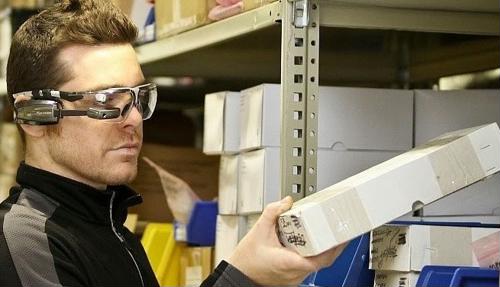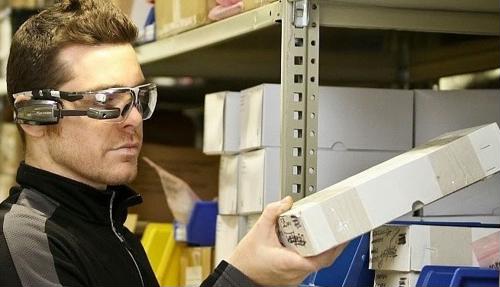
Augmented reality (AR) is a surging technology in the manufacturing space. Companies are creating programs that allow design engineers to create new product prototypes without committing to physical resources, drastically reducing the cost of prototyping. This flexibility is allowing the pursuit of more radical goals in product features.
In addition to advantages in the product design field, AR is pushing warehouse worker efficiency. Proper implementation of AR technology in the workplace reduces the human resources required for training, leads to fewer mistakes, decreases the time needed to learn tasks and provides more data feedback than ever before – allowing companies to pinpoint exactly where their training programs are weakest.
Hands-Free Training
Working in a warehouse is a physically demanding job. While employees will stop occasionally to check readouts and other data, they will usually need both hands to operate machinery, whether that is a forklift or a wireless barcode scanner.
While advanced smartphones and tablets can project an AR display, in the ideal world a worker has both hands devoted to the task before them at all times. On this level, AR integrates the manual in ways never before possible. Where a worker used to have to stop and check their progress, now they can learn in real time.
A 2017 article from the Harvard Business Review highlighted an exercise done by GE where a worker wired a wind turbine control box. His first trial was done using a traditional training method – the second time with a head-mounted AR display. With the AR device, he shaved off over a third of the time required, and this was on his first time using the headset.
Immediate Communication with Supervisor only When Needed
Head-mounted AR sets require a camera to see the world. While this camera helps the software understand what it is looking at, it can also be used by remote supervisors. When a worker is in trouble and does not understand the on-screen directions – or an unforeseen event has occurred – he or she will be able to signal for help. A technician will immediately be able to see through the worker’s eyes, gaining a complete understanding of what is happening.
In this way, both worker and supervisor will be able to communicate more effectively. Supervisors will be better at managing their workers and workers will have more one-to-one feedback whenever they step into a situation outside of established protocol.
Recorded Performance for Increased Data Yield
The camera on the AR headset provides another advantage: data feedback. An AR training program can be divided into sections, forcing a worker to complete all tasks before training is finished. These programs can track how many attempts were needed with each section. For example, if an employee struggled with properly understanding a barcode scanner, it could be a problem with an employee. If 15 trainees in a row struggle with that same barcode scanner step, then the problem likely lies elsewhere.
Companies could use this data to further streamline not just their training but their workflow process. By knowing which portion of work is the most mentally challenging, executives can better align their resources on employee education.
A Quicker Grasp of Sophisticated Concepts
2 million of the forecasted 3.5 million skilled manufacturing jobs created during the next decade will not be filled.
There is a noticeable skilled worker gap in the manufacturing space. According to The Manufacturing Institute and Deloitte, 2 million of the forecasted 3.5 million skilled manufacturing jobs created during the next decade will not be filled. CEOs in the industry are bracing for the fallout from this gap, but AR could help avoid it before it occurs.
Numerous AR experiments have shown the reduced time it takes employees to learn basic procedures. However, this new visualization can be taken further. A ScienceDirect report highlighted how a group of 20 volunteers was able to construct a gully trap in just over four minutes using AR assistance. The average worker time was between five and seven minutes.
AR provides simple step-by-step directions no matter how complex the task. Companies would no longer have to rely on what skilled workers they had to train up the new recruits. Everyone would get the same technology and everyone would master the same steps through guided repetition. All employees could be skilled employees. At the very least, managers will have the right data tools to know which workers are performing and which are not.






